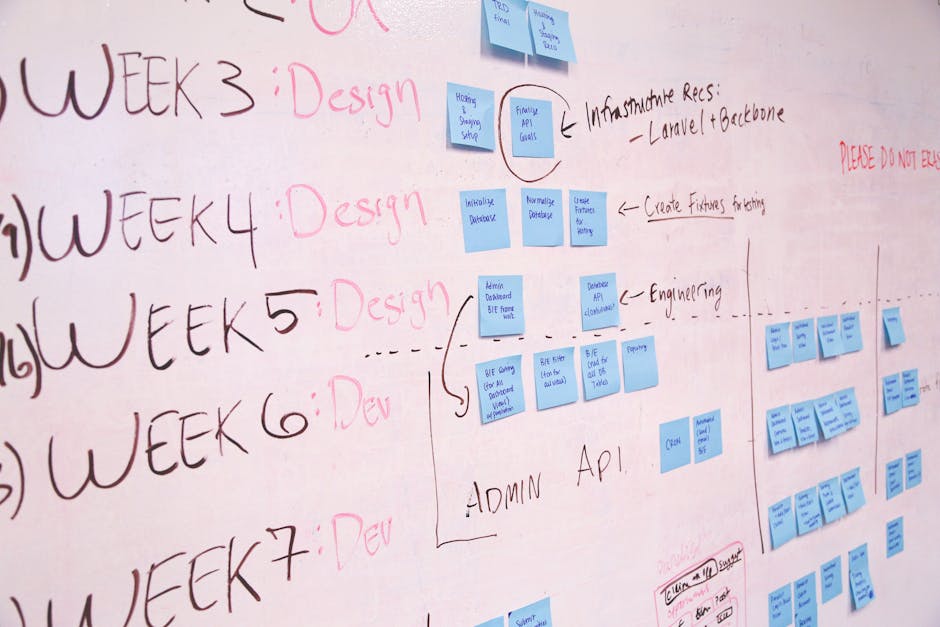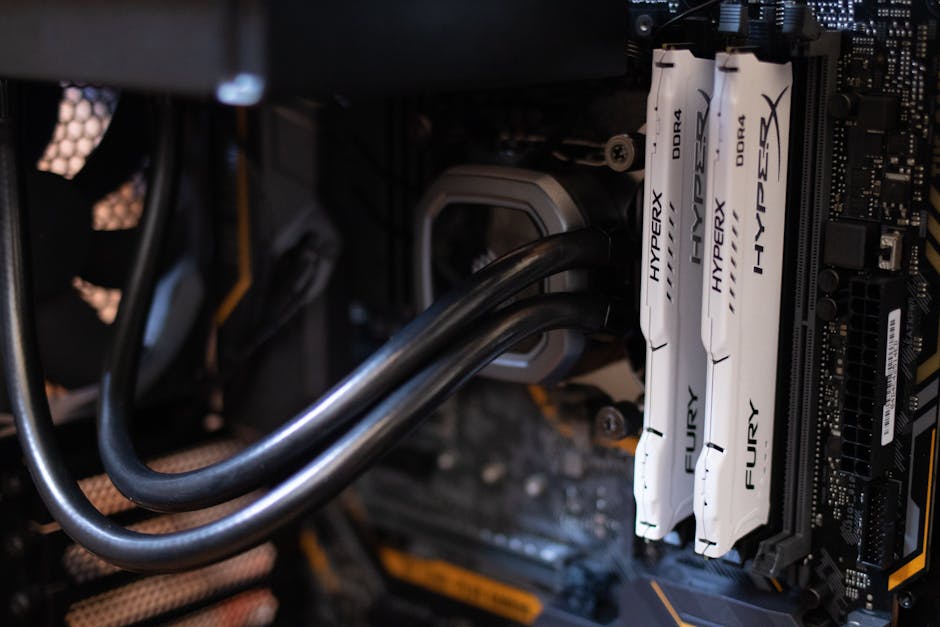In the era of digital transformation, serverless frameworks have emerged as a game-changer for developers, offering a streamlined approach to building and deploying applications without the hassles of traditional server management. By abstracting infrastructure, serverless allows teams to focus on writing code and innovating at a pace that modern businesses require. However, with this newfound freedom comes the critical challenge of cost management—especially in the realm of API development.
Cost management is not just a secondary concern; it’s at the heart of utilizing serverless technology effectively. The pay-as-you-go pricing model may seem appealing, yet without careful oversight, costs can spiral out of control. Developers need to adopt strategic practices that align performance goals with budgeting constraints. This article aims to guide you through key techniques and strategies to not only harness the potential of serverless frameworks but also keep your API development financially sustainable.

Serverless frameworks represent a significant shift in how applications are built and deployed. At its core, a serverless architecture allows developers to focus on writing code without the hassle of managing servers.
One of the fundamental principles of serverless architectures is the event-driven nature of execution:
Serverless frameworks bring several advantages to API development:
This enhancement in productivity accelerates deployment times.
Cost-Effectiveness:
This can lead to significant cost savings, especially for applications with fluctuating workloads.
Rapid Scaling:
In essence, serverless architectures not only simplify the development process but also offer a robust, flexible, and cost-effective way to build and maintain APIs. This is especially vital in today’s fast-paced software landscape, where adaptability and efficiency are crucial.

When diving into serverless architectures, it’s crucial to grasp the financial model that drives these services. The pay-as-you-go pricing structure is one of the standout features of serverless computing, transforming the cost landscape for API development. Instead of shelling out for server capacity that might go underutilized, you only pay for the compute resources you actually use. This means your costs can scale down significantly during low-traffic periods and spike only when demand increases.
However, while this model is beneficial, it comes with its own set of challenges. Unchecked usage can lead to unforeseen expenses, especially if your APIs experience sudden popularity or if functions are not optimized for efficiency. Keeping a close eye on your usage metrics is essential to maintain cost-effectiveness. Monitoring tools can help you track down which functions consume the most resources and where potential waste lies. By identifying these hotspots, you can adjust accordingly, tweaking configurations, scaling back on resources, or even determining if a different approach might serve your needs better.
Overall, cost management in serverless frameworks requires active engagement. By understanding how pricing operates and implementing monitoring practices, developers can harness the power of serverless architectures while keeping the financials in check.

Developing APIs using serverless frameworks can come with a variety of costs, but implementing the right techniques can keep those expenses in check. Here’s a look at some key strategies to ensure you’re not overspending while maximizing performance.
First things first, nail down your function configuration. This means carefully managing both memory allocation and execution time. Allocate just enough memory to process requests efficiently without wasting resources, as servers charge you based on the amount of memory and execution time. If your function runs faster, you’re saving money. Additionally, don’t forget to adjust your timeout settings; you want them tight enough to prevent unnecessary execution but generous enough to handle tasks effectively.
Caching can be a game-changer when it comes to reducing costs. By implementing caching methods, you significantly cut down on cold starts and execution frequency. Use tools like Redis or even in-memory caching to deliver faster responses. Not only do cached responses lead to quicker interactions for users, but they also minimize the number of times your functions need to run, translating to lower costs.
Switching to an event-driven architecture can help in minimizing function execution costs. Trigger-based models mean your functions only fire up in response to specific events, rather than running constantly. Using services like AWS Lambda or Azure Functions to create these event-driven solutions allows you to pay solely for the resources you consume when events occur, maximizing your cost savings.
API gateways play a vital role in serverless applications, and optimizing them can lead to substantial savings. Be mindful of your configurations; for example, setting throttling limits ensures not too many requests overwhelm your functions at once. Leverage features like caching at the API gateway level to reduce calls to your backend service. Each optimization, no matter how small, contributes to your overall cost efficiency.
To keep track of your expenditure, set up robust monitoring tools that track both performance and costs. Using metrics and logs to analyze usage will help identify areas where you’re overspending. Regularly review these analytics and adjust your strategies accordingly. Being proactive about monitoring means you can spot inefficiencies before they lead to runaway costs.
By employing these techniques, you not only keep your API development cost-effective but also enhance the overall user experience and application performance. Remember, the goal is to strike a balance between functionality and cost-efficiency, ensuring that your serverless architecture works optimally without breaking the bank.

When it comes to cost-effective API development within serverless frameworks, optimizing function configuration is a game changer. Here are some straightforward strategies to ensure you’re not overspending on compute time and resources:
Memory allocation directly impacts the performance of your functions. A common misconception is that more memory equates to better performance. While it’s true that functions with more memory get allocated more CPU power (leading to faster execution), over-allocating memory can inflate costs significantly. Start by analyzing the current memory usage of your functions. Utilize serverless monitoring tools to gather insights on how much memory your functions actually need to run effectively, and adjust accordingly. Experiment with different settings to find that sweet spot where performance meets cost-efficiency.
Execution time can rack up costs quickly, especially if your functions are running longer than necessary. Break down complex tasks into smaller, manageable units. This not only leads to quicker execution times but also allows for better isolation of performance bottlenecks. Remember, every millisecond counts, so ensure your code is efficient — eliminate unnecessary computations, use async calls wisely, and leverage lightweight libraries.
Each serverless function has a timeout setting that defines how long it can run before being forcefully terminated. Configuring this setting to reflect the expected duration of your function will help prevent unnecessary costs. If a function is consistently reaching its timeout limit, it’s a signal that it needs optimization. Don’t hesitate to set a timeout that makes sense for what your function is doing, taking into account that longer execution could mean higher costs, especially in a pay-per-use environment.
By thoughtfully managing memory allocation, execution time, and timeout settings, you can drastically reduce unnecessary costs associated with serverless functions. This not only helps you stay within budget but also leads to a more responsive and efficient API, optimizing the user experience.

Caching is a game-changer when it comes to optimizing your serverless APIs. It enhances both performance and cost-efficiency by minimizing cold starts and reducing the frequency of function execution, allowing you to serve requests much faster and with less computational effort.
There are several caching strategies you can adopt:
Note: In-memory caches are limited by the function’s lifecycle; once the function terminates, the cache is lost.
Distributed Caching Systems:
Cold starts—the delays that occur when a serverless function is invoked after being idle—are a notorious challenge in serverless architectures. Implementing caching mechanisms can significantly mitigate these cold starts:
This allows your function to access necessary information faster, without the need to spin up a new instance each time it’s called.
Utilizing caching techniques leads to reduced execution time, which can translate directly to cost savings in serverless frameworks that charge based on execution duration. Consider the following:
To effectively implement caching, consider using:
These tools provide the necessary infrastructure to store and retrieve your data efficiently, allowing you to focus on building features rather than wrestling with performance bottlenecks.
In summary, caching isn’t just a performance enhancer; it’s also a cost-saving strategy that optimizes your serverless APIs. By integrating effective caching techniques into your API development process, you can speed up response times and ensure that your serverless architecture remains both efficient and economical.

Adopting an event-driven architecture can significantly cut costs in serverless API development. With this model, your functions aren’t running continuously; instead, they’re triggered only by specific events. This means you won’t pay for idle time since you’re charged based on execution. Events can originate from user actions, database changes, or even scheduled tasks, offering flexibility and efficiency.
For instance, in a typical serverless setup using AWS Lambda or Azure Functions, functions are invoked by events such as HTTP requests, message queue notifications, or changes in storage (like S3 uploads). By leveraging these triggers effectively, you can minimize unnecessary function executions.
Additionally, consider integrating with tools like Amazon SNS or SQS to decouple components of your application. This separation allows you to manage usage more granularly, as you only invoke functions when it’s necessary. The more you can offload processing to these event-driven services, the less you’ll end up spending.
Incorporating event-driven architectures not only helps with cost reduction but can also enhance the performance of your APIs. Functions tend to respond faster since they only work when prompted, resulting in improved user experiences without hopping between low-cost and high-cost execution patterns.
Overall, by strategically setting up your application around an event-driven framework, you’re not just optimizing for costs—you’re also optimizing for agility and responsiveness, making your serverless APIs both economical and efficient.

API gateways are a vital aspect of serverless architectures, acting as the first point of contact for incoming requests and providing critical functionality, such as traffic management, security, and monitoring. However, to truly maximize cost-effectiveness, it’s essential to optimize how your API gateway is configured and used.
Understand Your Traffic Patterns
First, take time to analyze the traffic your API receives. Understanding peak usage times and average request volume can help you configure your API gateway to handle traffic more efficiently. For instance, if you notice a consistent drop in requests during off-peak hours, consider implementing throttling or reducing the number of active endpoints at those times.
Use Rate Limiting Wisely
Implementing rate limiting can both enhance your API’s security and save costs. By controlling how many requests each user can make in a given time frame, you can prevent abuse and reduce unnecessary executions of your serverless functions. Make sure to set limits that protect your resources without hindering legitimate user access.
Optimize Request and Response Payloads
Minimizing the size of your request and response payloads can have a direct impact on the data transfer costs and processing time. Use lightweight formats like JSON or Protocol Buffers and ensure that you’re sending only the necessary data. This not only speeds up response times but also reduces the likelihood of exceeding payload limits, which can incur additional costs.
Choose the Right Integration Types
API gateways often offer several types of integrations – such as Lambda proxy integration or HTTP integration. Each has its own billing structure and performance implications. For instance, while Lambda proxy integration can simplify handling requests, it might come with higher execution costs if not managed carefully. Evaluate which integration type best fits your use case for a balance between performance and cost.
Enable Caching at the Gateway Level
Many API gateways provide caching capabilities that can store frequently accessed data and reduce the number of function invocations. By enabling caching, you can serve common responses faster and save costs by avoiding redundant execution of backend functions. Just be mindful of cache expiration and invalidation strategies to ensure that users receive fresh data when necessary.
Regularly Review and Adjust Configurations
Finally, make it a habit to regularly review your API gateway configurations. As your application scales and traffic patterns evolve, what worked well at one stage might not be optimal later. Regular adjustments can help maintain efficiency and keep costs in check as your usage changes over time.
By paying close attention to these aspects of your API gateway, you can significantly improve cost management in your serverless architecture, ensuring you get the most out of your API development efforts without breaking the bank.

Monitoring and analyzing usage is essential in managing costs effectively in serverless frameworks. The pay-as-you-go model can work wonders for your budget, but without diligent oversight, you might end up paying more than you bargained for.
First, setting up monitoring tools is crucial. Services like AWS CloudWatch, Azure Monitor, or third-party tools such as Datadog can help you keep tabs on your API performance and associated costs. These platforms allow you to visualize metrics in real-time, enabling you to spot anomalies or spikes in usage that could signal inefficiencies.
Next, focus on the metrics that matter. Look for patterns in invocation frequencies, execution durations, and error rates. Identify functions that are used infrequently or have high execution times. Maybe you’ve got a function that’s continuously invoked but takes longer than it should—this is a red flag for optimization.
Utilizing logs can also provide deeper insights. By diving into your logs, you can pinpoint which API calls are leading to unnecessary invocations. Perhaps certain endpoints are called too often, or certain payloads are leading to cold start issues. By understanding these behaviors, you can refactor your APIs or introduce caching solutions to reduce unnecessary load.
Regularly analyzing these metrics will foster a culture of continuous improvement. Set up alerts for significant deviations from the norm—this can help you stay proactive about potential issues rather than reactive, saving both time and money.
In summary, monitoring and analyzing your serverless API usage is not just about keeping track; it’s about making informed decisions that lead to cost savings and performance enhancements. The more you know about how your applications behave in production, the better equipped you are to optimize and manage costs effectively.

When diving into the world of serverless frameworks for API development, a proactive approach to optimization can save you time and money. Here’s a recap of effective best practices that can help you maintain cost-effectiveness:
By implementing these best practices, you can streamline your serverless API development process. This ensures you’re getting the best bang for your buck while delivering efficient and responsive applications. Remember, optimization is not a one-time task, but a continuous cycle of assessment and adjustment.

In summary, optimizing serverless frameworks for API development hinges on a few key techniques that can significantly enhance cost efficiency. Here’s a breakdown of the essential strategies:
Adjust memory allocation and timeout settings to ensure applications run smoothly without unnecessary expenses.
Leverage Caching Strategies:
Implement caching solutions like Redis to mitigate cold starts and decrease execution frequency, resulting in quicker response times while staying within budget.
Adopt Event-Driven Architectures:
Minimize function execution costs by triggering actions only when necessary, leading to significant cost savings.
Optimize API Gateways:
Utilize API gateways efficiently and understand their configurations to substantially reduce related expenses.
Monitor and Analyze Usage:
Integrating these techniques into your development process is vital, but it’s equally important to foster a culture of continuous optimization:
Regularly reassess and refine your strategies to maintain cost-effectiveness.
Scalability and Adaptability:
In the long run, strategically optimizing your serverless frameworks goes beyond mere cost-cutting; it can pave the way for innovative development and the creation of robust applications tailored to user needs.